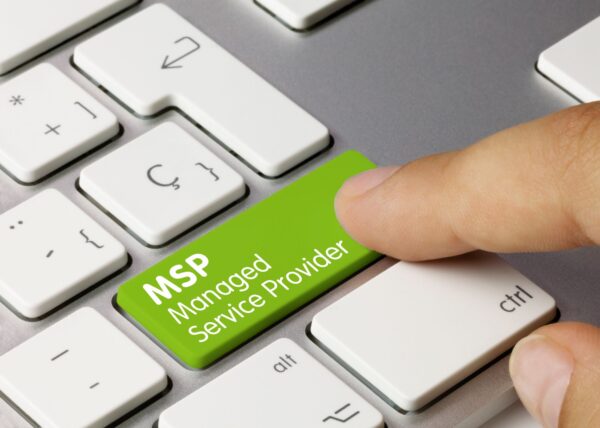How To Work With An MSP To Improve Your IT Operations
It’s said that businesses have seen increased productivity and operational efficiency in modern times thanks to advancements in information technology (IT). But because of the lightning-fast advances in IT, startups and small businesses can have a hard time catching up.
Without the right IT team and resources, as an entrepreneur, it’s hard to be left behind and fail to satisfy your organization’s IT requirements to remain competitive in the modern business world. Fortunately, there’s a solution you can try out–partnering with a managed service provider (MSP).
In this post, you’ll learn the basics of MSP, its benefits, and different tips to help you effectively work with one and get the most out of their services to improve your company’s IT operations. Continue reading to learn more.

Defining MSP
An MSP like Spectrumwise is a third-party agency that specializes in providing IT services. They help manage another company’s specific IT needs, including optimizing network systems, monitoring cybersecurity, managing cloud services, ongoing IT support, and so much more.
Working with a reputable managed IT service provider allows your organization to adapt and innovate in a digitally advanced business world without taking on the challenging and time-consuming responsibilities of creating and maintaining a full-time IT department.
Benefits Of Outsourcing An MSP
Outsourcing an MSP offers numerous benefits to your company’s IT.
For one, hiring an MSP can help save you money. While it costs you money to hire an MSP, it’s actually more cost-effective than running an in-house IT team. Generally, you’ll need to pay more for recruiting, onboarding, and training an in-house team.
Working with an MSP also improves overall business productivity and efficiency. They can ensure that all IT-related tasks and functions are streamlined and meet your requirements. MSPs ensure that all technologies are working efficiently all the while resolving any possible issues. With all systems working smoothly and adequately automated, your employees can complete tasks efficiently. Plus, your employees don’t have to worry about IT issues, allowing them to focus more on core workflows.
Lastly, MSPs ensure that your business is well protected against cyber-related threats. Having a team of IT experts with diverse expertise and experience, you can ensure that your business is well-protected and monitored against all cybersecurity issues. And it gives you access to superior protection and security solutions compliant with industry-specific and government cybersecurity regulations.
Working With An MSP: 6 Tips To Maximize Their Services
As you can see, MSPs can offer numerous advantages for your business. Whether you’re still looking for an MSP partner or already have one, this section shares critical tips to help you get the most out of this business relationship. Read on.
1. Choose The Right MSP Partner
Maximizing a business-to-business relationship (B2B) starts by finding the right partner. You want to search and compare providers to ensure that you hire an MSP partner that fits your requirements.
When looking for an MSP provider, here are vital things to consider:
2. What IT Services Do You Need
When choosing an MSP that can help improve your IT operations, the first thing to consider is to understand your company’s needs. Your purpose or goal for outsourcing an MSP should align with your business’ IT requirements and specifications.
Knowing your organization’s IT needs can help you narrow down the number of providers you’ll have to choose from. Create a list of IT-related tasks you need. Prioritize critical services such as security and monitoring, especially if you have a tight budget.
3. Team Skills And Experience
The MSP industry is growing. With the increasing demand for IT experts, the industry is saturated with fledgling MSPs.
While there’s nothing wrong with partnering with an MSP startup, if you want to maximize your IT operations, it’s essential to work with an agency with a proven track record. Generally, you want an MSP with diverse experts who have the necessary skills and experience to deliver the IT services you need.
4. Cost
The cost of outsourcing an MSP can vary, depending on the location and IT services you need. If you’re on a budget, you want to do your homework and compare different package prices. If possible, you can ask for quotes from three different providers. Ask the companies about any possible hidden costs and whether or not you’re allowed to customize a plan.
5. Company Reputation
Regardless of how good-looking a provider may appear on their website or social media, you shouldn’t skimp on researching their public reputation. Online ratings, testimonials, and reviews can provide better insights into the quality of services they provide to the public.
Don’t let a negative review or two scare you away. Generally, a few negative ratings are normal since no business can entirely satisfy every client out there. If possible, you can ask for company referrals from colleagues or friends to help narrow down your options.
6. Scalability
Opting for a service provider that can offer you advanced or specialized services in the future can streamline your business’s scalability. You want an MSP partner to grow together with. It’s more convenient to find a provider that can help scale your business than choose one with standard expertise and service only to search for another provider once your company’s IT needs begin to grow and change.

Service Level Agreements
The service level agreement (SLA) is the most crucial document you’ll sign when hiring a 3rd party IT company. Thus, you want to read it thoroughly. Generally, SLA outlines the level of services to expect from the MSP, including minimum service uptime me and response times for requests. These can have a significant impact on your business operations, so make sure to look at the document closely.
1. Let Them In
Although they’re technically a ‘third party,’ you should make an MSP a part of your business. You should consider them partners and build a transparent relationship with them. After all, they’ll manage most parts of your company’s IT operations. So, to get the most out of their services and improve your IT operations, you should let them see the actual conditions on the ground.
When an MSP has transparent access and knowledge about your business’s IT operations, they can accurately tailor their services to your needs and goals. Of course, you don’t want to give them access to everything in your business. Instead, you want to provide them with only what they need to help them do their work properly.
2. Define Roles And Expectations
Setting clear roles and expectations with your MSP partner can help maximize the business relationship you two have, ensuring its overall success. This is why it’s essential to have a clear and well-defined SLA.
In addition, you want to set up a reporting structure to help avoid redundant IT job functions and requests that can lower overall productivity and performance. Your business can enjoy higher productivity when everyone knows who’s performing what task and each one’s level of accountability.
3. Set Metrics And Provide Feedback
As with any business investment, you want to measure your MSP partner’s effectiveness. Defining metrics before signing the SLA can help your MSP partner to focus their efforts on concerns and issues that truly matter to your business.
Then, send the metric results to your MSP partner, mainly if they aren’t keeping up with regular assessments. In addition, like any team in your company, you should provide honest and valuable feedback as well, allowing your MSP partner to get more insights on how to serve your company better.
Regular check-ins with your MSP team can provide both of you a thorough understanding of what’s working while making changes to those that aren’t.
4. Let Them Work
Once you provide the basics of an MSPs job–the tasks they need to complete, company rules and regulations, the metrics to measure their success, and so on–you can now let them do their job. Generally, you want to let them figure out how to provide the services you need and pay attention only to the results.
As long as they’re not doing something disruptive, illegal, or unethical, it’d help if you’re focused on the results, not how the MSP was able to get them.
5. Communicate The Change
Outsourcing an MSP means that your business should be open to significant changes.
Since your MSP provider will manage all or most of your IT tasks, you should communicate the change with the rest of the company. This is particularly true if you have an existing IT department since they’ll have to collaborate with the MSP provider and adapt to each other’s methods and processes.
By communicating the new changes in operations, your MSP provider can quickly adapt to your business and vice versa, effectively streamlining and making the transition fuss-free.
Takeaway
The right MSP partner can help improve your business’s IT-related operations, allowing you to keep up with the fast-changing technology of the modern world. Whether you’re still searching for a managed IT provider or already partnered with one, following the abovementioned tips can help you get the most out of their services and ensure a beneficial business relationship.












